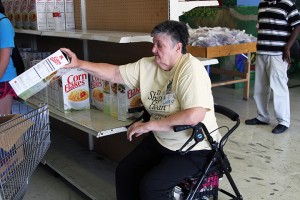
Travis Taylor | Lariat Photo Editor
Reporter
The city of Waco is counting on area non-profits to help tally up the number of the people they assist.
The Heart of Texas Homelessness Management Information System is a database that local nonprofit assistance providers are using to keep their services data-informed.
Participating organizations contribute information about who they’ve helped and what the person needed.
The system stores the information, and it can be referenced by participating organizations at any time.
The system is a collective approach used to confidentially aggregate specific demographic data, said Teri Holtkamp, who is the Waco homelessness administrator.
Such information is a good thing for the grants and federal support the city receives for area service organizations, she said.
Holtkamp said addressing poverty in the community without having any data is like piecing a very complicated puzzle together without having ever seen the picture on the box.
“We’ll be able to look and know within neighborhoods — what need looks like,” Holtkamp said.
She said the system could also lend factual perspective to help groups in the community work better with each other.
“You’re talking and you’re helping and it’s not a few people secretly putting corners together,” Holtkamp said.
The city loans access to the system to participating groups like the Salvation Army, Caritas of Waco and the Shepherd’s Heart food pantries. The data system is operated by properly trained and licensed individuals.
Robert Gager, executive director at the Shepherd’s Heart food pantry, said information systems like this one are nothing new. They’ve been attempted before, he said.
CharityTracker was one of those information systems. Gager said it proved ineffective after the economy’s behavior forced staffing cuts at the Capital Area Food Bank which had sole access to the data.
“Everyone was set up privately,” he said. “We didn’t share the information pantry to pantry. The only one who could get that information was the food bank.”
The new system is more collective by nature. Organizations give clients an identification card with a barcode that’s specific to the individual and information about cash and non-cash federal benefits they receive, disability, veteran status and basic household information. The information is stored in the HMIS database.
Each visit to the assistance program is logged into the database, and recorded with a scan of the client’s ID card.
“HMIS is a federal mandate,” Holtkamp said. “It’s not completely funded, but it’s not completely unfunded.”
Waco is working with the federal government to make this data system available to more non-profit and community groups in the area.
And while participation is not required across the board, local food pantries like the Shepherd’s Heart are starting to use it more.
At the Shepherd’s Heart, Gager set up four black Dell computers on top of a series of desks near the entrance of a renovated glassfront in an old shopping strip off 36th Street.
The computers face a series of aisles — an aisle stocked with sacks of dried noodles and beans, canned vegetables on the next few, and cereals on the far right — each armed with a new keyboard and a barcode scanner.
Gager said getting clientele at the Shepherd’s Heart acquainted with the new system has been no easy task.
He said before reorganizing the new HMIS informational, it took his group about an hour to process each client’s identification information.
The ID process is broken up over the course of two weeks and clientele spend less time dealing with paperwork. By the end of the process, each client receives an ID card to scan after they’ve picked up their groceries.
The scan keeps track of those who have visited the Shepherd’s Heart. Information about what help they’ve received can be written onto their corresponding profile.
Gager said working with as many people as his group does, plugging uniform data into the system has been a slow process.






